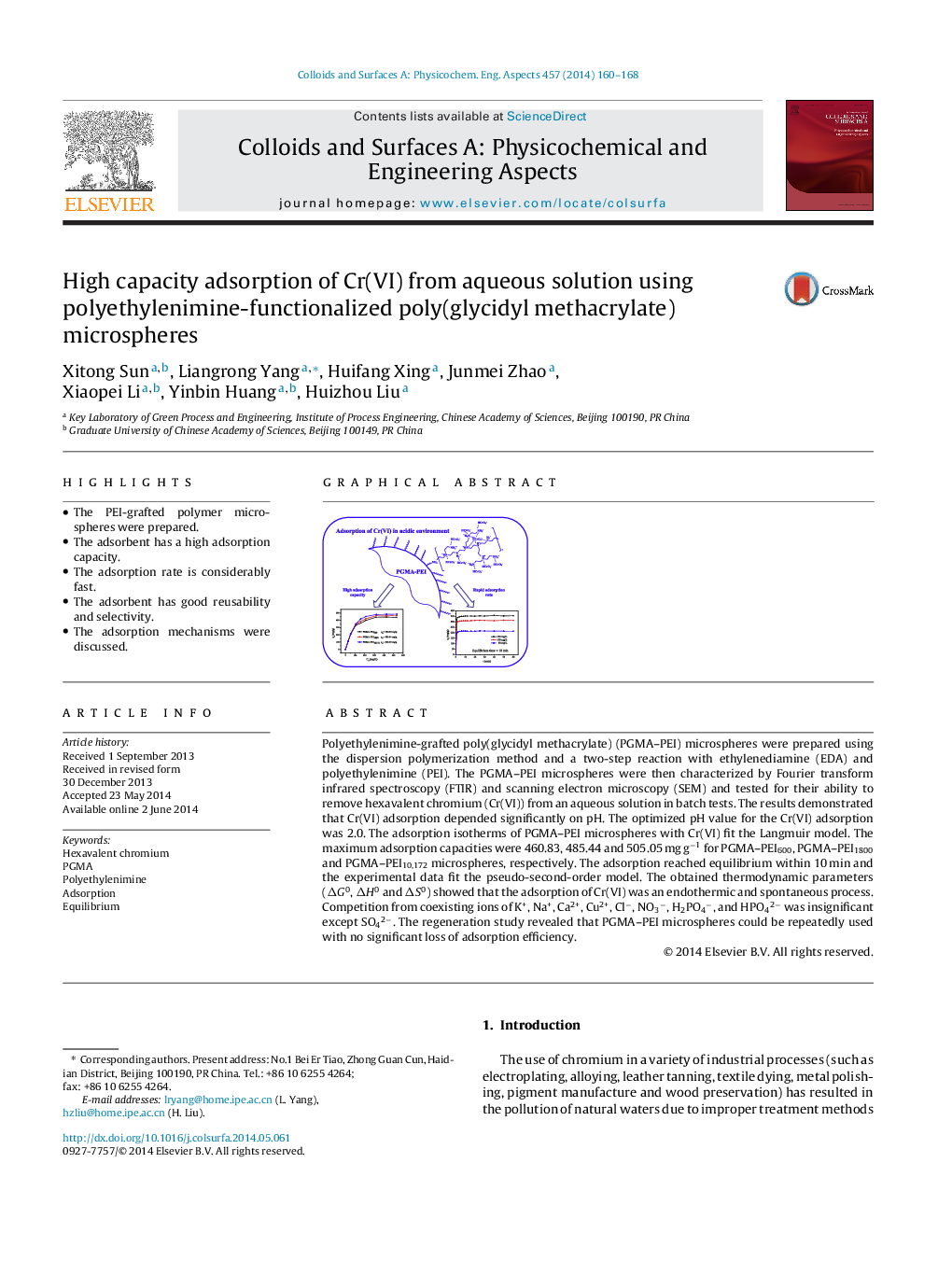| Article ID | Journal | Published Year | Pages | File Type |
|---|---|---|---|---|
| 592822 | Colloids and Surfaces A: Physicochemical and Engineering Aspects | 2014 | 9 Pages |
•The PEI-grafted polymer microspheres were prepared.•The adsorbent has a high adsorption capacity.•The adsorption rate is considerably fast.•The adsorbent has good reusability and selectivity.•The adsorption mechanisms were discussed.
Polyethylenimine-grafted poly(glycidyl methacrylate) (PGMA–PEI) microspheres were prepared using the dispersion polymerization method and a two-step reaction with ethylenediamine (EDA) and polyethylenimine (PEI). The PGMA–PEI microspheres were then characterized by Fourier transform infrared spectroscopy (FTIR) and scanning electron microscopy (SEM) and tested for their ability to remove hexavalent chromium (Cr(VI)) from an aqueous solution in batch tests. The results demonstrated that Cr(VI) adsorption depended significantly on pH. The optimized pH value for the Cr(VI) adsorption was 2.0. The adsorption isotherms of PGMA–PEI microspheres with Cr(VI) fit the Langmuir model. The maximum adsorption capacities were 460.83, 485.44 and 505.05 mg g−1 for PGMA–PEI600, PGMA–PEI1800 and PGMA–PEI10,172 microspheres, respectively. The adsorption reached equilibrium within 10 min and the experimental data fit the pseudo-second-order model. The obtained thermodynamic parameters (ΔG0, ΔH0 and ΔS0) showed that the adsorption of Cr(VI) was an endothermic and spontaneous process. Competition from coexisting ions of K+, Na+, Ca2+, Cu2+, Cl−, NO3−, H2PO4−, and HPO42− was insignificant except SO42−. The regeneration study revealed that PGMA–PEI microspheres could be repeatedly used with no significant loss of adsorption efficiency.
Graphical abstractFigure optionsDownload full-size imageDownload as PowerPoint slide
